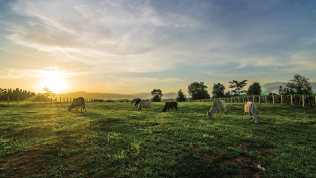March 13th, 2020
In September 2019, the NSW Environment Protection Authority (EPA) released the draft Contaminated Land Guidelines: Consultants Reporting on Contaminated Land (Consultants Guidelines) that will replace the existing Guidelines for Consultants Reporting on Contaminated Sites (2011).
The draft Consultants Guidelines outline the stages of reporting on the management of contaminated land and provide checklists of reporting requirements. A reporting framework is provided to ensure that reports contain correct information in a suitable format to allow for efficient review by regulators, site auditors and other interested parties.
Key changes to the Consultants Guidelines include:
- New stages: Two new stages are included in the reporting
process as:
- Sampling and analysis quality plan: This new stage requires documentation of the planning process for collecting and evaluating data during the subject site investigation. The plans should vary in detail according to the scope and level of information available to the consultant and must be flexible to account for changes arising during site investigations.
- Site specific risk assessments and modelling: The draft guidelines outline reporting requirements for site-specific risk assessments, such as Human Health Risk Assessments and Ecological Risk Assessments. A tiered approach is recommended, with modelling to predict environmental concentrations where required. When undertaking modelling, the guidelines advise that consultants should clearly describe assumptions and uncertainties.
- New requirements for existing stages: Further details are provided on existing stages such as long-term site management and monitoring. Monitoring reports must include: a background to the site (including a conceptual site model); justification for any departures from the required monitoring plan; and consideration of site-specific criteria which may trigger additional remediation work.
- Duty to report: Following a preliminary site investigation or detailed site investigation, the draft guidelines advise that consultants should take reasonable steps to draw their client’s attention to any potential duty to report contamination as required under section 60 of the Contaminated Land Management Act 1997 (NSW).
- Remedial action plans (RAPs): Guidance
on what is to be included in a RAP has been expanded and clarified. RAPs must
now:
- summarise findings of preliminary and detailed site investigations;
- document identified contamination risks to human health and/or the environment;
- set remediation objectives to ensure a site will be suitable for its current or intended purpose;
- define the extent of remediation required and assess options to achieve the remediation goals;
- document in detail all procedures to reduce risks posted by contamination;
- establish environmental safeguards required to complete remediation in an environmentally acceptable manner;
- identify necessary approvals and licences;
- outline waste classification, handling and tracking requirements;
- ensure remediation is consistent with relevant laws, policies and guidelines;
- identify how successful implementation of a RAP will be demonstrated; and
- identify the need for and nature of any long term management.
- Long-term site management: The draft guidelines state that where full clean-up is not feasible, or on-site containment of contamination is proposed, an environmental management plan (EMP) may be required. An EMP must address the mixing of environmental mitigation and monitoring measures for soil, groundwater and/or hazardous ground gases throughout an existing or proposed use. An EMP must also state its objectives and describe the nature and location of contamination at a site and what long-term site management is needed to ensure ongoing protection of human and environmental health.
Public consultation on the draft guidelines closed on 8 October 2019. The guidelines are likely to be finalised and published in late March / early April 2020.


